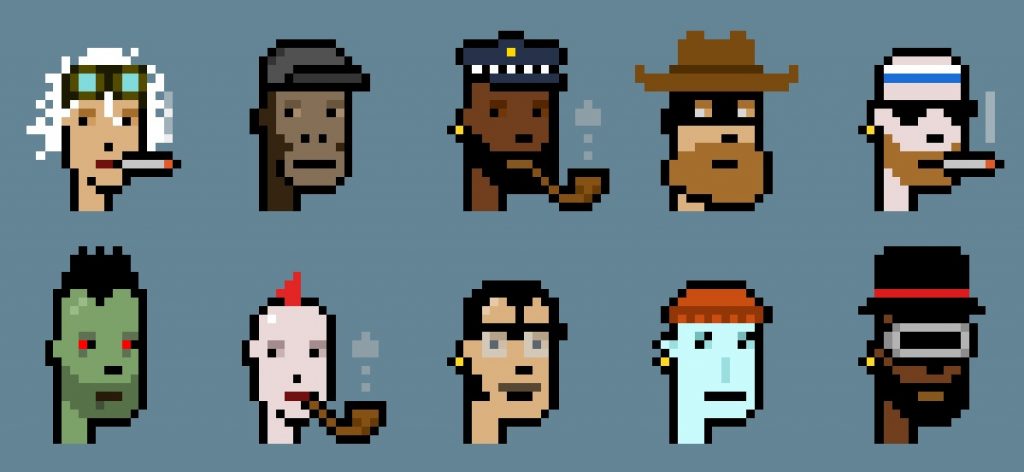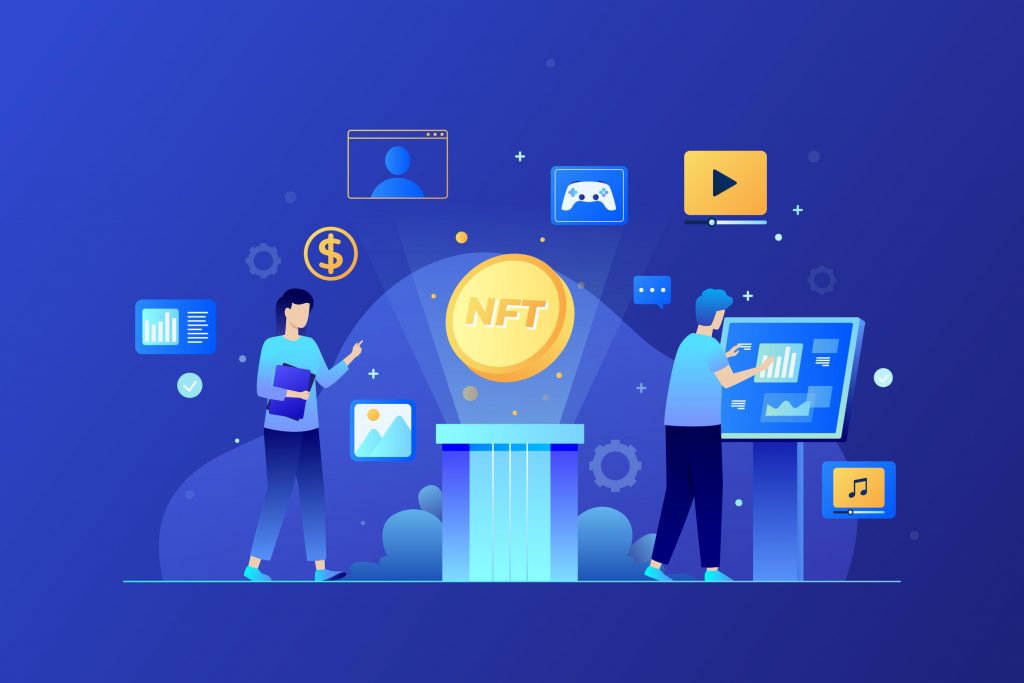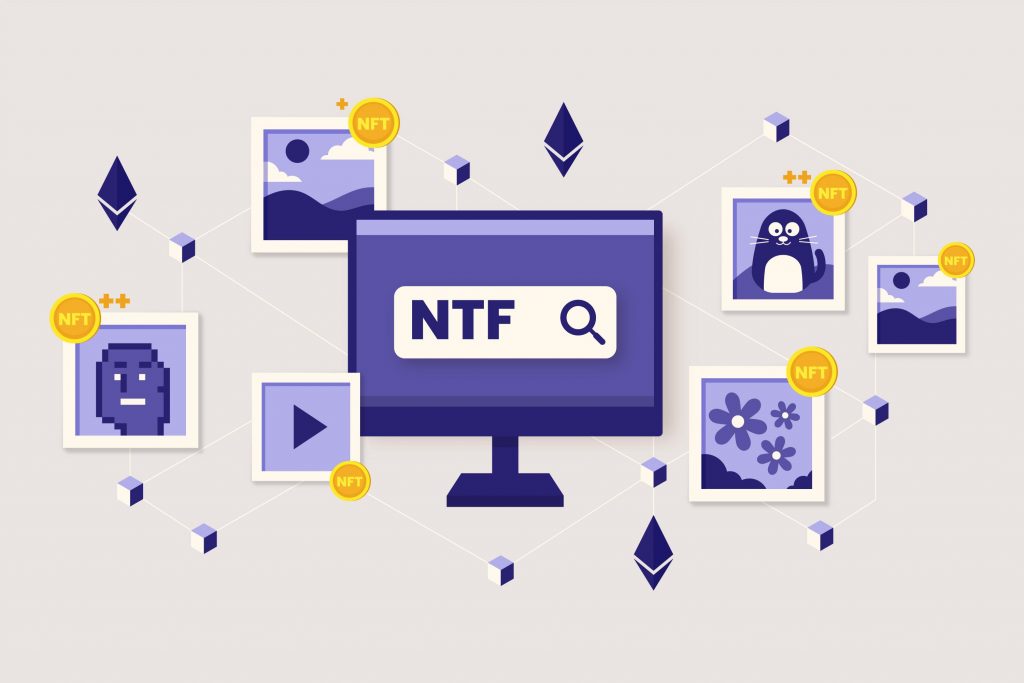What are NFTs? What are NFT Marketplaces? Is buying NFTs profitable?
Innovative developers and investors are increasingly taking interest in NFT all over the world. Many people are observing this trend and getting drawn towards this new concept. If you’re one of those people who are trying to keep up with the Crypto World and everything related to it, then it’s time for you to get into the world of NFTs!
With this guide, you will be able to understand the concept of NFTs, their use, how do they differ from Cryptocurrency, how do NFTs work, and why NFTs could be beneficial for you!
- What Is An NFT?
- Types Of NFTs
- Difference Between NFTs And Cryptocurrency
- What is a Smart Contract?
- How Do NFTs Work?
- Advantages Of NFTs
- How To Make NFTs?
- How To Buy NFT?
- How To Sell NFTs?
- What Are NFT Marketplaces?
- Need for NFT Marketplaces
- Expansion Is Unlimited
- Tracing Is Difficult
- Authorization Of Users
- Create an account
- Purchase
- Sell
What Is An NFT?
A Non-Fungible token(NFT) is a one-of-a-kind unit of data stored on a Blockchain, which is a type of Digital Ledger. Several types of digital files can be connected to NFTs, including pictures, audio, and videos files. Although NFTs rely on a digital ledger to offer a public certificate of authenticity or evidence of ownership, the underlying digital files can be freely exchanged and copied.
For instance, a writer might upload a story online for readers to enjoy it freely. However, until the writer sells the ownership rights of the story, nobody could plagiarise the story (possibly in the form of audio or movie). The digital copy of the story represents the original piece of work (just like an NFT point at the real piece of work or collectible), which can be viewed or downloaded (but does not provide ownership rights until bought from the writer).
Types Of NFTs
Many types of Digital Assets can be turned into NFTs, like:
- Collectibles
- Artwork
- Event tickets
- Music and media
- Gaming
- Virtual items
- Real-world assets
- Identity
- Memes
- Domain names
- Tweets
Difference Between NFTs And Cryptocurrency
NFTs are not fungible, which implies that they cannot be substituted by another token, unlike Cryptocurrencies. An NFT of digital artwork is one-of-a-kind, and its value cannot be compared to that of other digital artwork because they are not the same.
For instance, you cannot compare the Mona Lisa with the Lady with an Ermine. Both the paintings are made by famous painter Leonardo Da Vinci but both are different and special on their own. These two paintings might not have the same value if sold and cannot be substituted by one another.
NFTs are indivisible, unlike Cryptocurrencies, NFTs are purchased in their entirety and cannot be separated. For instance, you can buy 2 ETH, and sell them separately (1 ETH at once), but the NFT of a painting cannot be bought or sold into pieces (a new concept of Fractional NFTs has come into existence but is still in its infancy).
Cryptocurrencies are digital money that may be purchased, sold, or mined. NFTs are Digital Assets, not currencies, and they can be purchased and traded but not mined.
NFTs do not have any value all by themselves, instead the Digital Asset they represent holds the ultimate financial value. For instance, a video clip of LeBron James scoring in a match is valuable and the NFT associated with it just represents the ownership rights of the Digital Asset and helps to maintain a record of secondary sales of the video.
What is a Smart Contract?
A Smart Contract is an agreement put directly into the code (written in programming languages, for instance, in Solidity on the Ethereum Blockchain) that states the conditions of the contract between the buyer and the seller which is stored in a Decentralized Blockchain network. Execution is controlled by code, and dealings are tracked and not reversible.
How Do NFTs Work?
The code of a Smart Contract is executed on the Blockchain to generate an NFT which complies with the ERC-721 (Ethereum Request for Comments) requirements which means that NFTs have Unique Identification (ID) numbers assigned to them by the Smart Contract that created them.
The Smart Contract associates a unique NFT token with an Ethereum address. Cryptographic Hashing of a Public Key of a Cryptographic key pair yields the address and the holder of the private key can prove ownership of the Ethereum address.
Advantages Of NFTs
1. Authenticity and Transparency
There is currently no way to verify the validity and ownership of Digital works shared by creators on several online platforms. NFTs provide proof of creation and ownership that can be attached to unique Digital Assets. NFT transactions are easily traceable, ensuring proof of worth as well as verifiable scarcity (the level of rarity a Digital Asset holds).
2. Security
NFTs can be traded securely and transparently. NFTs work as unchangeable digital signatures, giving collectors extraordinary trust. This assurance also extends to the art’s future legacy. The Blockchain protects digital works from censorship and physical degradation.
NFTs guarantee legitimacy, uniqueness, and ownership of unique assets, similar to the Blockchain technology that has built a trust protocol enabling the establishment of Cryptocurrency.
3. Accessibility
Digital collections become more useful when more people begin to work remotely, shun materialism, or minimize their luggage during trips. Viewing your art on your smartphone after downloading a Crypto Wallet (used to store the Private Keys that provide access to Cryptocurrency funds) instead of having a wall to display it on is as simple as it sounds!
4. Composability
Designers can launch NFTs that capitalize on the success of previous NFTs, composability allows each NFT project to be considered a component of a much bigger, interconnected ecosystem.
How To Make NFTs

You can create an NFT with the following simple steps:
- Choose the Digital Asset you want to convert into an NFT and ensure that you are the legal owner of the asset.
- In the next step, you need to choose a Blockchain like Ethereum, Tezos, Cosmos, or Zilliqa.
- Now, set up a Digital Wallet to trade NFTs. If you have been using Cryptocurrency then you might be familiar with the process and use of Digital Wallets.
- Now you have to select an NFT Marketplace following the process mentioned in the next section.
- Now for the last step, upload the Digital file onto the NFT Marketplace and convert it into an NFT.
How To Buy NFT?
Following are the steps to buy NFTs:
- Before purchasing any NFTs, you must first determine where they are being offered. There are Marketplaces like OpenSea, SuperRare, CryptoPunks, and Rarible where you can buy and sell NFTs because it is a Blockchain-based token.
- You can create an account on any NFT Marketplace. Connecting the account to your Blockchain Wallet is a prerequisite before you can purchase or sell anything. Most markets accept Ether as a means of payment because the bulk of NFTs are Ethereum-based. To buy Ether or any other Cryptocurrency, you’ll need an account in a Crypto Exchange and then send the Cryptocurrency to your Blockchain Wallet.
- You can submit a bid in numerous NFT markets and wait for some time to check if you won a digital workpiece.
How To Sell NFTs?
In order to sell NFT, you can opt for either of the following:
- You can purchase an existing NFT item and then resell it on another website.
- You can develop your own NFTs, auction them off, and sell them on other platforms.
What Are NFT Marketplaces?
It’s a platform that makes it simple to store and sell NFTs which are generally available for purchase or auction at a set price. To use such a marketplace, you’ll need a Cryptocurrency Wallet to make trades and store your tokens.
There are many Marketplaces for buying and selling NFT artwork. In general, specialized marketplaces are more popular than conventional ones because they include everything a client would require, specialize in selling some online artworks, and cater to a specific demographic.
Need for NFT Marketplaces
Expansion Is Unlimited
The NFT Market is a vast digital pool with millions of transactions taking place every day. It is simple to gain entry into this marketplace and trade multiple Digital Assets.
Tracing Is Difficult
Because NFT Marketplaces are virtual, they lack a physical presence which makes them virtually untraceable. Any transaction in this market necessitates the use of Cryptocurrency and a Crypto Wallet. The increasing use of NFTs in the future will give rise to the use of the Crypto market.
Authorization Of Users
A person cannot purchase or sell on the NFT marketplace without first creating a user account that will confirm market validity and authorization.
Following the procedures below will allow you to understand the operational process of an NFT Marketplace and enter the market.
1. Create an account
The basic process to create an account in every NFT Marketplace is often the same. One must first create an account, after which they must link their account to their Crypto Wallet by entering the correct Wallet password.
2. Purchase
An NFT can be purchased at an auction. A potential buyer might also submit an offer to the NFTs owner in order to negotiate a better price.
3. Sell
Users can sell their NFTs in the marketplace’s auction or to a buyer of their choice. To sell a Digital Asset, you have to upload it to the market and set a price. The NFT Marketplace will then extensively examine the digital work for legitimacy.
Then, the NFT be lifted into the market for sale after its authenticity is verified. After a seller accepts an offer, the Marketplace handles the money transfer.
How To Choose NFT Marketplaces?

1. Token Standard Of A Marketplace
Various NFT Marketplaces utilize different tokens. Common token standards utilized by Ethereum-powered marketplaces are:
- ERC-721
ERC-721 explains how to implement NFTs within an Ethereum-based blockchain using EVM (Ethereum Virtual Machine). In addition, ERC-271 specifies a set of rules that simplify the use of NFTs by providing a standard interface.
- ERC 998
With ERC-998 standard NFTs get the ability to possess other NFTs. Non-fungible tokens that follow the ERC998 standard also follow the ERC-721 standard.
- ERC 1155
ERC-1155 is a one-of-a-kind token that may be used to hold both non-fungible and fungible tokens. The standard proves to be more faster and efficient in Batch Token Transfers. ERC-1155 allows many types of NFTs to be created with a single contract.
- EIP-2309
When minting a large number of semi-fungible tokens, ERC-1155 excels, but when minting a large number of unique tokens, it falls short. Using the 2039 standard, you could produce millions of blank NFTs in advance and update the metadata(JSON document containing NFT’s name, description, traits, and other details) for each one at a low cost.
2. User Verification
As the popularity of NFT Marketplaces grows, so does the number of impersonators posing as buyers and collectors. Make sure that a marketplace’s verification process is stringent in order to keep out shady artists and general users.
On a Blockchain network, a creator can tokenize anything, including movies, GIFs, photos, and even music. Without the specific consent of the original owner, some designers can sell these collectible collections. Thousands, if not millions, of your hard-earned money, can vanish into thin air before you realize it.
3. Price
Although many NFT Marketplaces have yet to implement the price discovery tool, it is critical for both buyers and sellers. If you’re selling your artwork on the NFT marketplace, the price discovery feature allows you to determine the right rates that will entice purchasers. Similarly, before spending hundreds of dollars, purchasers can use the price discovery tool to make informed purchasing selections.
NFTs are expected to deploy widely in the next few years. This popularity boosts the market’s liquidity (ease of trade), making it easier to get the best price across several platforms.
4. Token Fractionalization
Depending on the collector, the genre of art, or even the timing of global or national events, NFTs can be quite expensive. Furthermore, some collectors provide exclusive ownership of their mintable work, which means it could be the only one in circulation. In that instance, the collector is free to set any price they want for the art.
Token fractionalization lets collectors acquire a piece of a highly valued NFT rather than the entire collectible which benefits both buyers and sellers. Instead of waiting for the highest bidder in an open auction, you may cash out your collection in bits and assign ownerships in the Smart Contract. Buyers can also become part owners of an NFT without having to spend a fortune.
5. Wallet Compatibility
Before minting or purchasing NFTs, users must first load their Wallets making platforms that work with a variety of Wallets a necessity. To ensure a positive experience and the safety of your cash, the integration should be simple, smooth, and secure. Furthermore, the marketplace should accommodate consumers who choose to connect with credit cards rather than mobile Wallets.
Based on the above criteria you can compare different top NFT Marketplaces and select the one most suitable for you!
How To Trade NFTs
Not only do Digital producers profit from selling NFTs, but some collectors sell NFTs from their collections. An NFT bought from a creator or collector on some marketplace before, can be sold as well.
1. Selling An Already Purchased NFT
The procedure of selling your NFTs on the secondary market (a transaction that does not include the original NFT creator) is the same as described above, with the exception that the Digital Asset does not need to be turned into an NFT.
Move the NFT to the marketplace where you wish to sell it (if it isn’t already there, or if your NFTs are only stored in your Crypto Wallet and aren’t available to be viewed on a marketplace). Then, from within the page of the NFT you want to sell, click the Sell button. Fees imposed by the Marketplace and any royalties imposed by the original NFT author will be deducted from the money received by the sale.
2. When To Sell NFTs?
Minting and selling NFTs can be a new way to get compensated for your work if you’re an artist or digital producer, thus selling will primarily depend on the demand of the asset and the amount customers are willing to pay. Gas costs (transactional fees to publish Smart Contract on a Blockchain) might cut into the profit or even cause a loss if the purchasing price isn’t high enough.
Perhaps you purchased an NFT for a specific purpose and no longer require it, or perhaps the value of an NFT you purchased has increased, then selling can be a good decision. Remember to include Gas Costs, Marketplace Listing Fees, and royalties paid to the original author when calculating your potential profit or loss on the sale. Money on Gas Costs can be saved by scheduling your listing on days when the Blockchain network is less congested.
How To Get Into Nfts?

1. Direct Sale And Purchase Of NFTs
Buying and selling NFTs is the simplest way to get started with NFT trading. In order to find an NFT for sale, you will have to use a dedicated marketplace or app. To complete the transaction, you’ll need a Digital Wallet, but NFTs aren’t supported by all Wallets, so make sure you select the one that does.
The Wallet must be filled with Cryptocurrencies once it has been set up and can be used to buy NFT. Upon verification of a sale, it is permanently recorded on the Blockchain and the NFT credited to your Wallet.
2. Invest In NFT
Trading NFT marketplace tokens or Cryptocurrencies is the way to go if you don’t want to become directly engaged with NFT trading but still want to participate in the sector. When a marketplace grows, the tokens used for transactions increase in value.
Trading the Cryptos used for NFT trading, for instance, Ethereum can be beneficial. As Ethereum is used more for both NFTs and conventional purchases, its value will climb, and resale tokens will be profitable.
3. Making And Selling NFTs
It is possible to generate money by creating and selling NFTs that others might want to buy. The development of the Digital Asset itself does not necessitate any specific skills but transferring it into an NFT is a little more difficult, however, many Blockchains have templates to make this task easier.
The Ethereum blockchain, for example, supports the ERC-721 standard, which is used to generate most NFTs. Also, semi-fungible tokens like concert tickets and gaming items use the ERC-1155 standard. A new standard, EIP-2309, permits authors to mint numerous NFTs in one transaction.
Security Disadvantages Of NFTs
Despite the fact that the popularity of NFTs is growing by the day, recent hacking incidents highlight the importance of understanding NFT security concerns. Let us have a look at the specific issues, vulnerabilities, and security threats that NFTs face today.
You might also be interested in:
1. Authenticity Of Users
Enabling 2FA (Two-Factor Login) when using a password-based authentication method substantially improves security. Regrettably, 2FA is not widely used.
- Sorare is a service that handles a user’s wallet for them. As a result, an attacker who gains access to a user’s account can download the user’s Ethereum private key and transact on their behalf. Sorare supports two-factor authentication, however, it is not enforced by default.
- Until the major incident that compromised a number of accounts in March 2021, 2FA was also an option for Nifty Gateway users. None of the compromised accounts had 2FA enabled, according to their initial assessment. With signature-based authentication, the user is provided a challenge string that must be signed by a wallet such as MetaMask.
- The marketplace dApp extracts the signer’s address from the elliptic-curve signature. On such websites, the user’s identity is represented by the address. This approach is followed by OpenSea, Rarible, Foundation, CryptoPunks, and SuperRare. This authentication mechanism is generally more secure than regular passwords because Ethereum private keys are essentially unguessable (because passwords are typically drawn from a limited set of characters, are shorter in length, and are easier to brute-force).
2. Missing Hardware Wallets Support
An NFT Marketplace can be used with a Hardware Wallet(HW) if the latter supports it natively or with an NFT Marketplace compatible Software Wallet(SW) that interfaces with that HW wallet. Because using an HW wallet through an SW wallet causes usability concerns, native integration is desirable.
- An SW wallet is used to manage several accounts. As a result, the user must switch to the HW wallet account using the SW wallet’s UI for each NFT Marketplace session.
- All requests to the HW wallet are forwarded to the SW wallet. A pop-up dialogue appears in the SW wallet. The requests will only be forwarded to the HW wallet when the user confirms.
- Additional procedures are required in both circumstances, which may confuse users, cause errors, and hinder the adoption of the safer HW wallet option. Some NFT Marketplace-specific SW wallets only support certain popular HW wallets in part or not at all. The Ronin wallet (used by AXIE) for example, supports TREZOR but not LEDGER.
- Native integration improves the user experience and enables NFT Marketplace-specific functionality. For example, LEDGER supports Ethereum plugins, which would increase security by showing binary transaction data in a human-readable format (if implemented by an NFT Marketplace). Some people on DISCORD who trade or collect high-value NFTs are open to incorporating HW wallets into their everyday routine. They are currently unable to do so due to the lack of a reliable integration. Unfortunately, no NFT Marketplace currently supports HW wallets natively.
3. Ambiguous Marketplace Contracts
NFT Marketplaces use Smart Contracts to process value assets and payments. As a result, making these contracts open-source and disclosing the outcomes of third-party audits has value. Not all marketplace contracts are open source or share the results of security audits.
- Sorare’s marketplace contract is closed-source.
- Rarible is a hybrid platform, with some marketplace contracts being open-source and others not.
- The OpenSea marketplace is underpinned by the open-source WYVERN exchange protocol, which has been audited by a third party.
- AXIE had their marketplace contract reviewed by QUANTSTAMP and made the report public.
- SuperRare has identified a reentrancy bug in their contract v1.0. (after three years of deployment). They cooperated with QUANTSTAMP to have the marketplace contract audited in response to this occurrence.
- Nifty Gateway operates the entire marketplace off-chain. As a result, no contract can be scrutinized or audited.
4. Non-Transparent Token Contracts
Token contracts, like marketplace contracts, should be open-source and audited. When an NFT Marketplace permits third-party developers to import tokens, audits and code verification become even more crucial, as these tokens can be fraudulent or dysfunctional, posing major dangers to users. Except for OpenSea, all NFT Marketplace token contracts are closed-source.
None of the NFT Marketplaces that enable external tokens, such as OpenSea, Rarible, SupareRare, and Nifty Gateway, include any kind of verification mechanism in the workflow. A broken contract can waste gas without doing any actual work.
5. Measures For Identity Verification
Despite the fact that major Crypto exchanges such as Coinbase, Binance US, and others have identity verification in place, no NFT Marketplace has taken any steps to enforce KYC (Know Your Customer) requirements or adopt AML/CFT (Anti-Money Laundering/Combating Terrorism Financing) procedures.
6. Marketplace Procedures
When assets are listed on NIFTY, the marketplace requires that the NFT be transferred to its own wallet first. In other words, the NFT is held in Escrow (held by NFT Marketplace until purchase conditions are met) while the marketplace handles the transaction off-chain.
From that moment on, no internal NIFTY sales are visible on the Blockchain, making it difficult to track token ownership in a trustless manner. The marketplace will transfer the token from the owner’s wallet to the designated account if and when the owner decides to remove the NFT from NIFTY which breaches the notion of decentralization.
On-chain, all other NFT Marketplaces record sale or transfer occurrences. SuparRare, Foundation, and CryptoPunks have on-chain bids, whereas the rest of the dApp stores bids off-chain, rendering them unverifiable.
Safeguarding NFTs is crucial for your financial stability and requires carefully planned arrangements. The process to prioritize, organize and draft out your desires for your NFTs or Cryptocurrencies can become simpler with Digital Estate Planning which is concerned with meeting the security and legal requirements of Digital Assets. Clocr makes it simple to build and maintain a Digital Estate Plan, allowing you to protect assets of personal and financial worth to you and your family.


